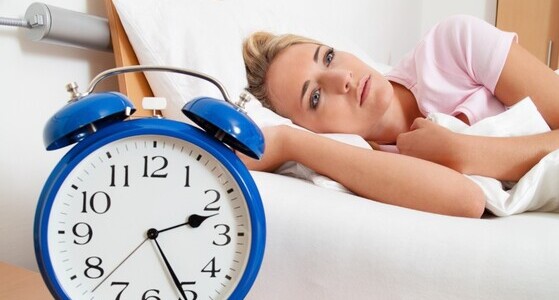Sleep disorders are conditions where in the normal sleeping pattern is disturbed.
This can then affect the quality, quantity, or schedule of sleeping depending on the type. Commonly, sleep disorders occur due to stress, mental illnesses, medical conditions, medications, lifestyle, or aging(Roddick & Cherney, 2020; Medline Plus,2021).
And while frequently overlooked, having a sleep disorder can affect not only sleep but also daily activities as the sleep deprivation and lethargy caused by sleep disorders can impact energy,concentration, and body function. Furthermore, it also affects the quality and longevity of life.
According to Colten & Altevogt (2006), long-term effects of sleep disorders are associated with increased risk for hypertension, diabetes, obesity,depression, heart attack, and stroke as cumulative sleep loss disrupts optimal body function.
Some symptoms of sleep disorders include difficulty in falling asleep or prolonging sleep, frequent napping, abnormal breathing patterns while sleeping (e.g. loud snoring, gasping), irregular sleeping schedule, irritability,and unusual or unpleasant experiences or movements during sleep.However, it is important to note that experiencing these symptoms may not always pertain to a sleep disorder and symptoms vary depending on the type of sleep disorder(Roddick & Cherney, 2020; Medline Plus,2021; Smith,Robinson, & Segal, 2020).
Types of Sleep Disorders
Sleep disorders can be categorized by their effect or their cause. There are over 90 types of sleep disorders, but the common types are insomnia, sleep apnea, restless leg syndrome (RLS),narcolepsy,and parasomnia(Colten &Altevogt, 2006; Mayo Clinic, 2019)
Insomnia
Insomnia is the most common sleep disorder, affecting 10% to 30% of adults,yet most often overlooked.It is characterized by persistent difficulty in sleep onset, maintenance, and difficulty in sleeping at a better schedule.There are two types of insomnia, short-term insomnia or acute insomnia,and chronic insomnia.
Short-term insomnia usually occurs due to a stressful event and lasts less than three months as the person copes with the stressful event. While chronic insomnia also occurs due to stressful events, it can also be due to other factors like irregular sleep schedules, poor hygiene,and mental health disorders. And chronic insomnia persists for three months or more with episodes happening at least three times a week (Suni, 2021).
To be diagnosed with insomnia, symptoms must persist for at least 3 months despite the opportunity for a good sleep nightly.There will also be a medical exam and questionnaire to be answered to ensure if symptoms are purely because of insomnia or an underlying medical condition.
One may also opt to document their sleep and wake cycle, and alcohol and caffeine intake a week or two before the doctor’s appointment to help the doctor evaluate.It can be treated through cognitive behavioral therapy for insomnia(CBTi),sleep-inducing medications, or both (Fry, 2020).
Sleep apnea
Sleep apnea is characterized by abnormal breathing patterns during sleep.With sleep apnea, breathing is labored or lapses (pauses) or the person is snoring that involves gasping, choking, or snorting which can wake the person from sleep,deprive the body of sufficient oxygen supply, and cause excessive daytime sleepiness and morning headaches.
There are three kinds of sleep apnea,CSA (central sleep apnea),OSA(obstructive sleep apnea), and mixed sleep apnea. OSA occurs due to blockage of the throat. CSA occurs due to problems in the control of the respiratory muscles by the brain. While mixed sleep apnea occurs when the person both has OSA and CSA (Suni, 2020).To be diagnosed, a simple appointment with the doctor is needed.Sometimes, the doctor may also conduct an overnight sleep study. Once diagnosed, treatment for sleep apnea may include lifestyle changes, sleeping side-lying, and nightly use of continuous positive airway pressure (CPAP)machineto open the air way (Suni, 2020).
Restless Leg Syndrome Restless leg syndrome (RLS)or Willis-Ekbom disease is characterized by tingling, prickling,or uncomfortable sensation in the legs while lying down or sitting down for too long that creates an undeniable urge for leg movement.However, it may also occur in the arm, chest, and head although it is uncommon.
Often, both legs are affected but may only persist in one or alternate between either leg.It also worsens at night making it difficult to sleep. Some causes of RLS are genetics, iron deficiency, uremia,depression, diabetes,and medications (Cleveland Clinic, 2020).
And while there is no specific test to diagnose RLS,there is a criterion for it that the doctor uses in their evaluation. The criterion includes the experience of unpleasant sensations in the legs that causes an overwhelming urge to move it in relief, exacerbation of the sensation sat night,and symptoms that are not due to a medical or behavioral condition.
Treatment for RLS may involve drug therapy like ingesting iron supplements,benzodiazepines, or anti-seizure drugs,or non-drug treatments like applying heating pads or cold compress and establishing good sleeping habits(National Institute of Neurological Disorders and Stroke, n.d.; Clevel and Clinic, 2020).
Parasomnia
Parasomnia refers to any abnormal behavior before sleeping, during sleeping, or during arousal from sleeping that can be due to lack of sleep,medical conditions, stress, or medications. There are two general types of parasomnias, non-rapid eye movement (non-REM) sleep and rapid eye movement (REM) sleep.
Non-REM sleep or arousal disorders happen during the first three stages of sleep and involve physical and verbal activity with the person not fully awake and non responsive. While REM sleep happens during the three non-REM stages of sleep wherein eyes move rapidly under the eyelids, and breathing, heart rate, and blood pressure increase due to vivid dreaming(Cleveland Clinic, 2020).
Diagnosis for parasomnia involves are view of medical history, sleep diary,and polysomnogram (an overnight analysis of sleeping behavior). Treatment for it depends on the type but it often involves medications, and CBT(Nunez, 2020).
Complementary health approaches
Aside from the standard treatment given by the doctor, one may also opt todo complementary health approaches to help solve sleep disorders. One approachmay be doing relaxation techniques before sleeping like meditation. Another may be taking melatonin supplements to promote good sleep. Or doing relaxation therapy like yoga or acupuncture. Or ingesting herbs or dietary supplements like chamomile teas.
Despite approaches being out of the standard treatment, it is always better to consult the doctor before doing any complementary health approaches to ensure safety (National Center for Complementary and Integrative Health,n.d.).




